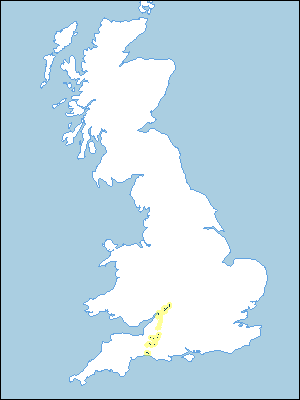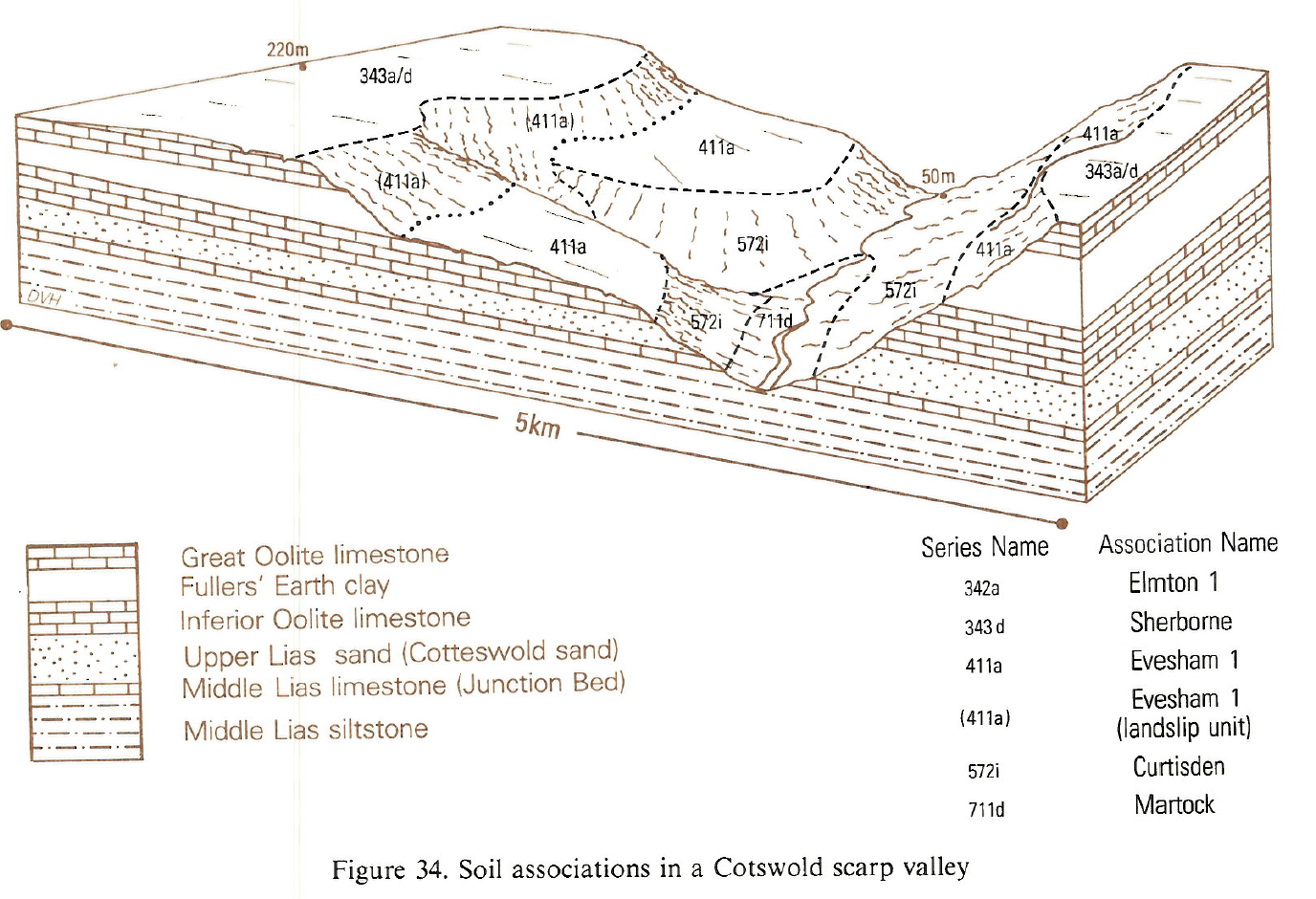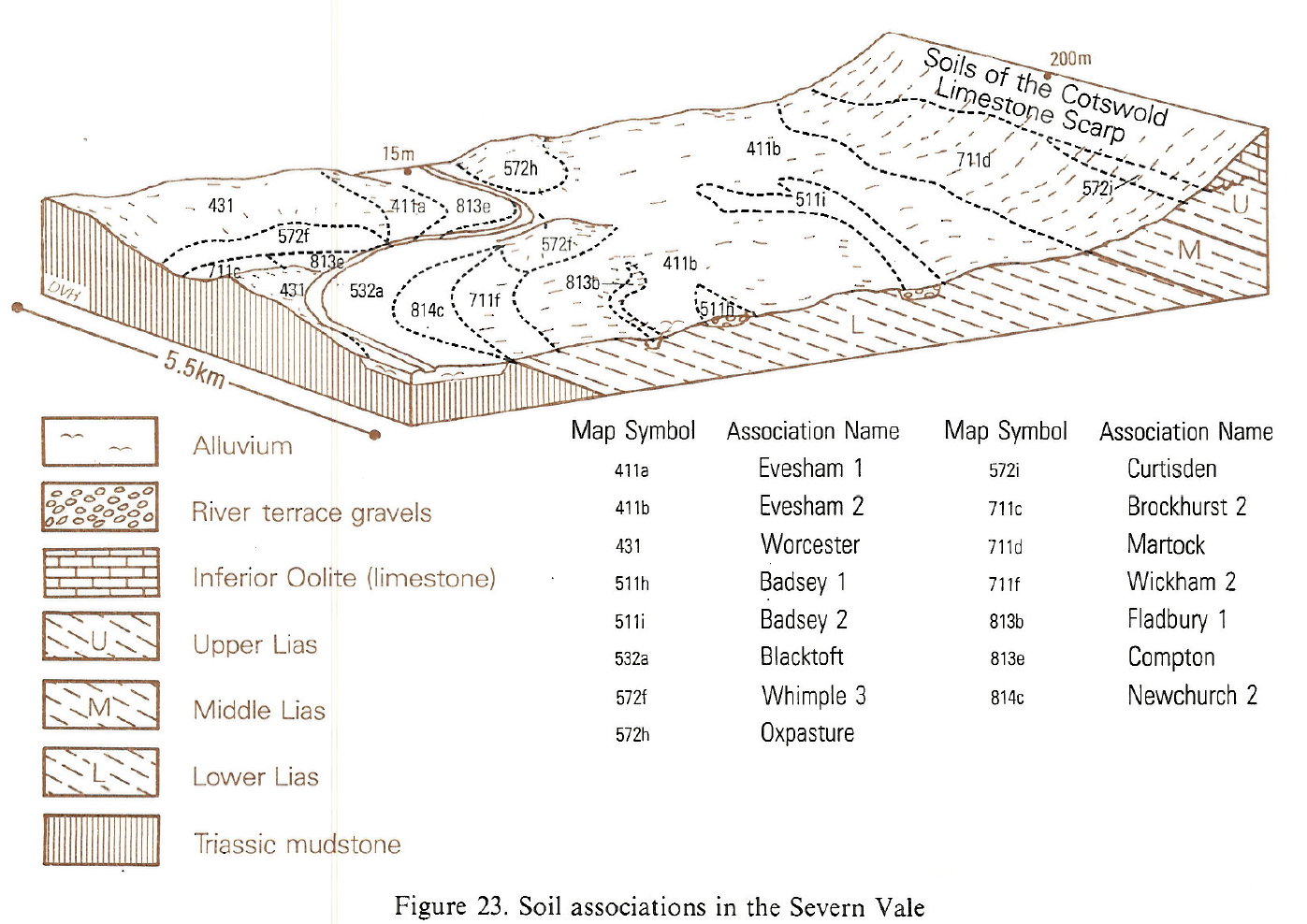
Soil Associations
0711d MARTOCK
Soil and site characteristics
Slowly permeable seasonally waterlogged stoneless silty over clayey and clayey soils over siltstone or shale. Some similar soils with slowly permeable subsoils and slight waterlogging. Landslips and associated surface irregularities on slopes.
Geology
Mesozoic and Palaeozoic siltstone and shale
Cropping and Land Use
Dairying on permanent and short term grassland; some fruit.
Component soil series
| Subgroup | Series name | Percentage | WRB 2006 link |
|---|---|---|---|
| 7.11 | MARTOCK | 50% | Eutric Albic Luvic Stagnosols |
| 7.11 | STANWAY | 15% | Eutric Albic Luvic Stagnosols |
| 7.12 | DALE | 10% | Clayic Eutric Stagnosols |
Covers 157 km2 in England and Wales
Soilscapes Classification
| 18 |
Slowly permeable seasonally wet slightly acid but base-rich loamy and clayey soils |
0711d MARTOCK
Detailed Description
Martock association consists of silty over clayey and fine silty stagnogley soils in Jurassic and Paleozoic siltstone and shale. It is present on the lower part of the Cotswold scarp in Gloucestershire and Avon on Liassic sediments and, in the vale below, over Paleozoic rocks. It extends into east Somerset and parts of west Dorset, again on silty Liassic strata. The principal soil, Martock series, is a greyish fine silty over clayey stagnogley soil with much ochreous mottling. Associated soils reflect facies changes in the underlying sediments. The similar Stanway series is fine silty throughout and Dale series is a non-swelling clay soil. In Gloucestershire and Avon much of the Cotswold scarp is affected by landslipping.
The association incorporates soils mapped previously as the Long Load and Martock series. The former Long Load series is now divided between Dale series where clayey and the re-defined Martock series where silty over clayey. The drier, less gleyed, part of the Martock series as formerly defined and mapped is now classed with the fine silty Curtisden series. Dale soils occur in Somerset and Dorset on gently undulating land often along the junction between the Lower and Middle Lias. Around Evercreech and further north, from Bath to Cheltenham, much of the scarp is landslipped and very undulating and locally the soil pattern is very complex. In the Berkeley Vale the association occurs on Silurian silty shales and Cambrian siltstones and there was formerly mapped as the Speller series.
Soil Water Regime
Martock soils are waterlogged for long periods in winter (Wetness Class IV) unless effectively drained (Wetness Class III); springs and land irregularities limit the scope for improving the Cotswold scarp. Run-off of winter rain is appreciable and mostly at shallow depth, especially on sloping land. In summer, profile available water is adequate to meet the needs of cereals, but these crops are rarely grown; for grass, the soils are slightly droughty.
Cropping and Land Use
Because all the constituent soils are moisture retentive with slowly permeable subsoils, they remain wet for long periods, so that cultivations and grazing are restricted even after appropriate drainage measures. Dairy farming is the main land use on improved ley grassland in the vale, but beef cattle, sheep or dairy herd followers are kept on permanent grassland on the steep or landslipped scarp. Some fodder crops are also grown and parts of the more accessible scarp have been improved and ploughed-up for ley grassland and cereals. Cider apple and perry pear orchards were formerly common on these soils but many have been grubbed and replanting has tended to be on more favourable soils, for example on the Curtisden association.
0711d MARTOCK
Distribution Map
 |
Note that the yellow shading represents a buffer to highlight the location of very small areas of the association.
Keys to component soil series
South Western Region
 |
Typical Landscapes
South Western Region
 |
South Western Region
 |
All information Copyright, Cranfield University © 2025
Citation: To use information from this web resource in your work, please cite this as follows:
Cranfield University 2025. The Soils Guide. Available: www.landis.org.uk. Cranfield University, UK. Last accessed 04/04/2025
